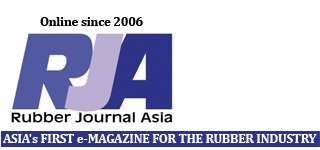 THE EU tyre market will soon become more transparent for consumers with the implementation of the tyre labeling in the region.
THE EU tyre market will soon become more transparent for consumers with the implementation of the tyre labeling in the region.
Moreover, the mandate will bring on challenges to enhance tyres as well as the materials that comprise them.
According to Dave Hardy, Technical Marketing manager in the Lanxess PBR business unit , and who also presented a paper on the topic “Future chances for high technology materials in tyres” at the Intelligent Tyre Technology Conference (ITT) being held in Darmstadt, Germany says that the new tyre labeling will affect not only the European market but also the entire global tyre industry. “Lanxess, as the premium supplier and world market leader in matters of tyre rubber, is ready to supply its customers around the globe with precisely the materials and know-how they need to assert themselves in a rapidly changing market with tyres that receive top marks in the new tyre labeling categories,” he says.
Today’s tyres feature better properties due to innovations, and Lanxess has contributed much to the development of special purpose rubbers that yield high-performance tyres. Lanxess’s latest offering is the ultra-high molecular weight product, Nd-PBR Buna CB21; whilst other promising special-purpose synthetic rubbers such as the high-vinyl SSBR grades, PBR 4078 are currently at the testing stage.
“Tyre labeling will make an important contribution to demonstrating not only to rubber experts but also to consumers just how much intelligence and know-how actually goes into producing a tyre,” says Dave, emphasising that using the company’s modern grades of high-performance rubber in tyres provides benefits such as reduced fuel consumption. In lieu of this, a fuel savings application developed by Lanxess shows that buying modern tyres with a low rolling resistance can pay for itself after only two years, even with only moderate annual mileages.
“These energy-saving tyres also offer good braking, abrasion and wet skid properties – frequently even better than before,” says Hardy. “That is something new in synthetic rubber development, because over several decades people thought that good driving properties on wet roads and outstanding rolling resistance were contradictions, that one excluded the other. Consequently, when tyre developers use the very latest generations of synthetic rubber, they not only save the environment vast quantities of CO2 emissions, they can also significantly reduce braking distances. In our opinion, this will also increase global demand for such products. By 2015, we anticipate an increase of over 70 percent compared with 2010,” he furthers.
While much has already been done to improve tyres, there is still plenty of room for improvement, Dave says. His work at Lanxess involves execution of new types of rubber based on what the consumer requires. “The latest state of the art is based on decades of intelligent research work, ” he said, “With rubber blends of functionalised SSBR and Nd-PBR rubber, combined with the blessings of the silica technology, it is already possible today to design tyres that satisfy Class A. New synthetic rubber grades from Lanxess can create a fresh stimulus here. The ultra-high molecular weight NdBR Buna CB21, for example, contains only a few free chain ends and will thus have superior abrasion properties with low energy dissipation, ” he explains.
According to Lanxess, its production technology also allows not only the continuous production of functionalised SSBR rubber via a smart polymer chain modification (among other things through the addition of cyclosilanes), but also the production of SSBR rubber with “unusual” styrene and vinyl contents. The prospects are that other new products such as PBR 4078 and PBR 4070 (high-vinyl and high-styrene grades) will display an improved Payne effect and improved low-temperature properties. They, too, are amenable to end-group functionalisation. Other new developments are aimed at further improving the processing characteristics of the latest Lanxess tyre rubber grades during compounding.
“We are confident that, with these new types of rubber, we will be able to produce even better tyres than before. Not only will they have even lower rolling resistance, they will also display even better wet grip and abrasion resistance,” says Hardy, adding, “And that is exactly the same across the globe. It doesn’t matter which of our many production plants around the world actually supplies the high-performance rubber. ” (RJA)
